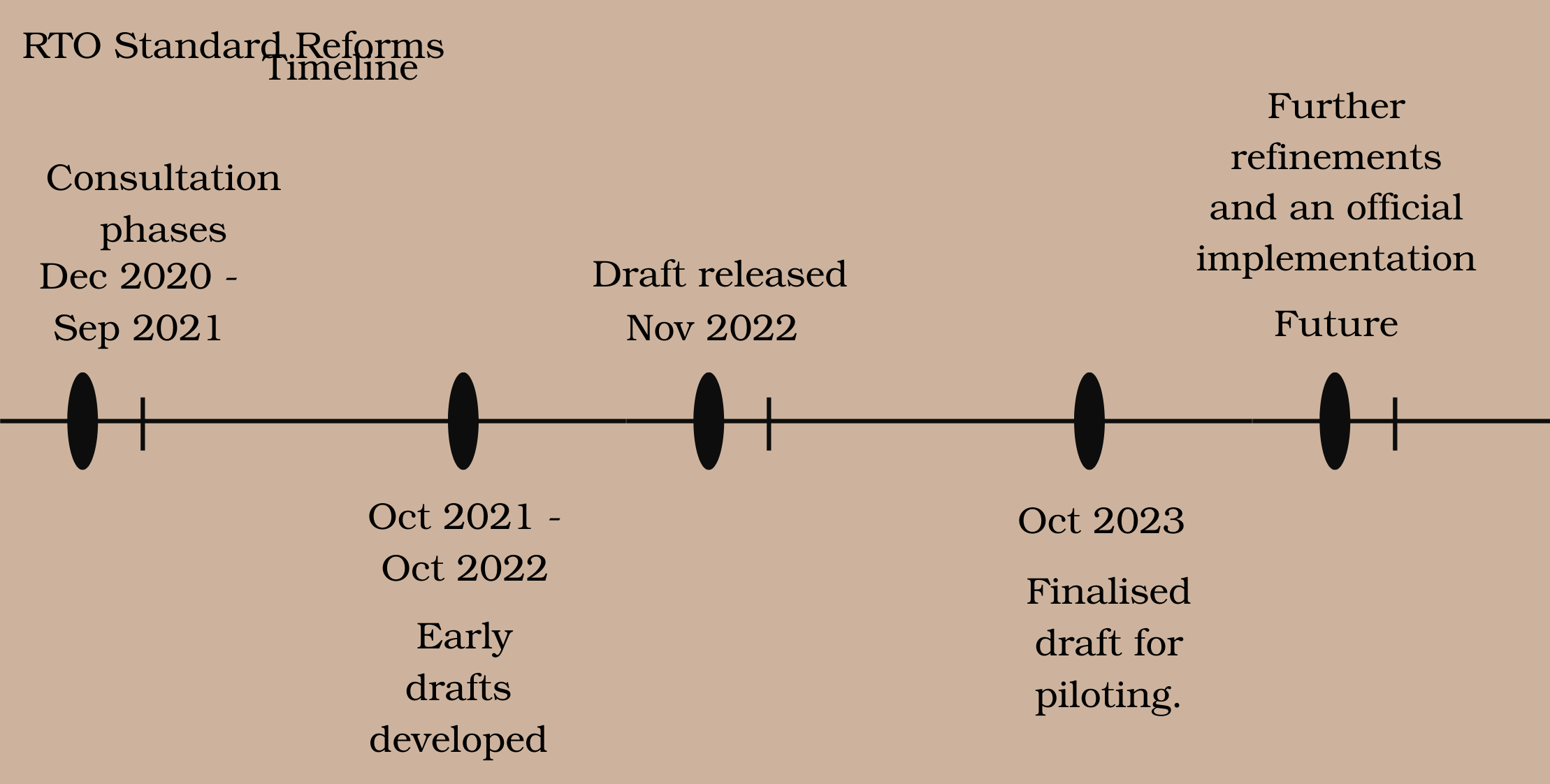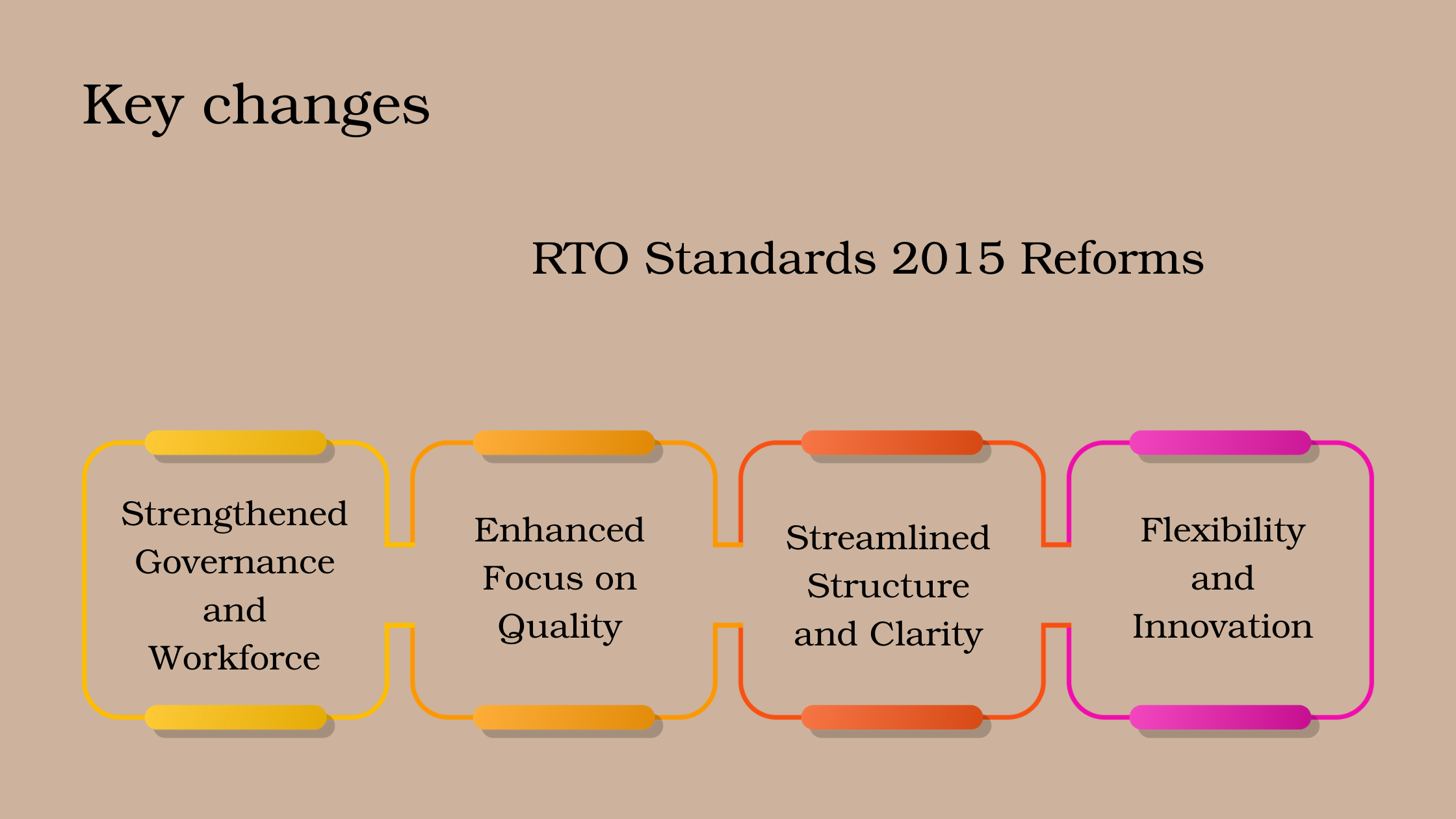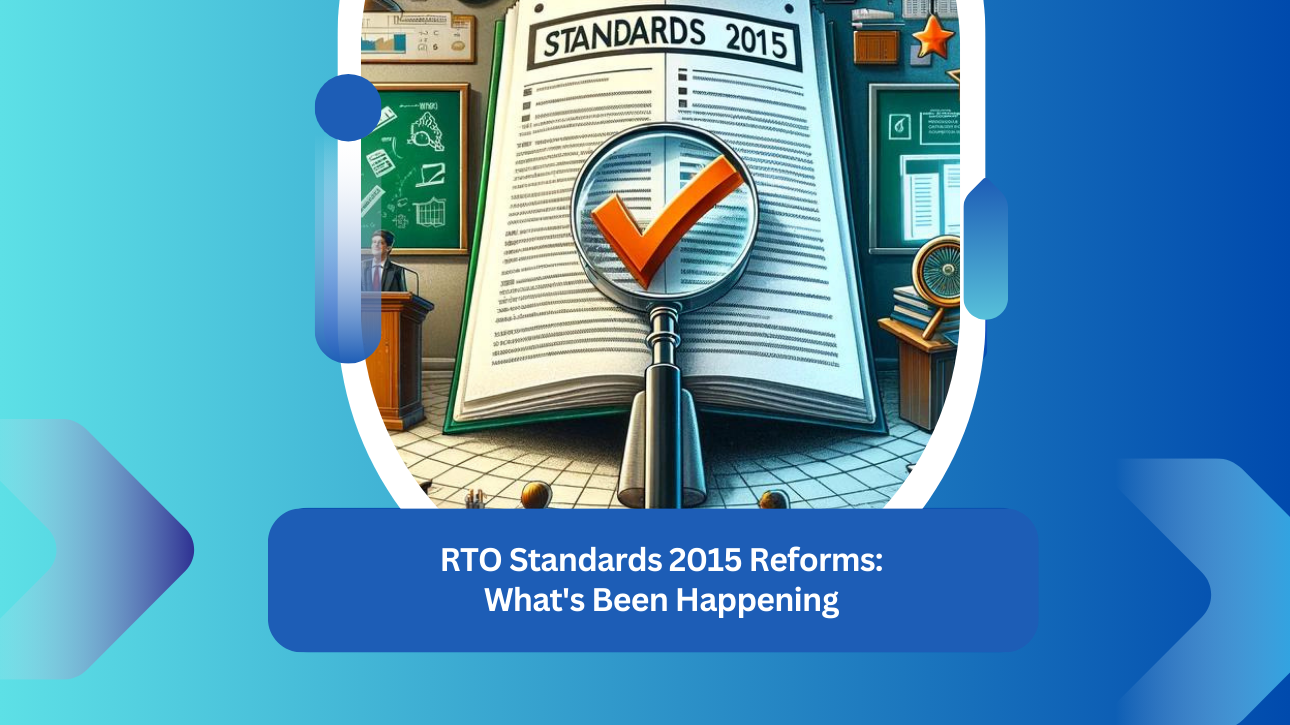The Australian VET landscape is undergoing a transformation. On October 16, 2023, the Department of Employment and Workplace Relations (DEWR) unveiled a revised draft of the RTO Standards, marking a significant step towards enhancing quality, flexibility, and innovation in training delivery.
As an RTO, staying informed and understanding these changes is crucial for navigating the future and ensuring your organisation thrives. This blog delves into the revised standards, exploring the timeline, key provisions, potential impacts, and actionable steps you can take to prepare.
Whether you’re a seasoned leader or a new player, join us on this journey to unlock the opportunities presented by the RTO Standards update.
Why Australian VET need RTO Standard reforms?

The document highlights several reasons for the reform:
- Quality and Integrity: Strengthening the focus on quality outcomes for learners and employers, ensuring high-quality training delivery.
- Clarity and Flexibility: Providing clearer standards and allowing for more flexible and innovative training approaches.
- Diversity: Reflecting the diverse nature of the VET sector and catering to different RTO settings.
- Effectiveness: Addressing concerns about the current standards, including lack of clarity, prescriptiveness, and focus on administrative processes instead of quality outcomes.
By addressing these issues, the reforms aim to create a more robust and adaptable VET system that benefits all stakeholders, including learners, employers, and RTOs.
RTO Standard Reforms: Timeline

To understand the present, it is important to understand where it all started. So, here it is:
- December 2020 – September 2021: Consultation phases focusing on understanding quality issues and the effectiveness of the current standards.
- October 2021 – October 2022: Early drafts developed with stakeholders, incorporating feedback and research.
- November 2022: Draft released for public consultation with feedback gathered through forums and written submissions.
- October 2023: Finalised draft for piloting.
- Future: Based on pilot results, further refinements and an official implementation timeline are to be determined.
A Summary of the RTO Standards 2015 Reforms
The Australian VET sector is poised for a significant shift with the upcoming implementation of the revised RTO Standards 2015. These reforms, driven by feedback from stakeholders like you, aim to enhance quality, flexibility, and innovation in training delivery.
But what does this mean for RTOs like yours? Let’s delve into the key changes and their potential impact.

Streamlined Structure and Clarity
- Say goodbye to the complex 38 requirements! The revised standards boast a streamlined structure with 25 standards across four quality areas, offering a clear snapshot of what constitutes quality training on a single page.
- Performance indicators are introduced under each standard, providing greater clarity on the systems and processes you should have in place. This empowers you while ensuring consistent understanding and quality across the sector.
Enhanced Focus on Quality
- Training quality takes center stage with strengthened requirements, ensuring sufficient time for instruction, practice, and assessment.
- The concept of “validity” is explicitly retained, emphasising its importance in ensuring robust assessment tools.
- Learner support is enhanced with a focus on informed decision-making and contextually appropriate wellbeing support tailored to your learner cohort and training program.
Flexibility and Innovation
- Industry engagement is now integrated within training and assessment, reflecting its role in strengthening your programs.
- The removal of “amount of training” allows you to tailor training duration based on actual learning needs, fostering innovation and flexibility.
- Recognition of prior learning and credit transfer are streamlined for better AQF alignment, creating smoother learning journeys for your students.
Strengthened Governance and Workforce
- Leadership and accountability are emphasised with clearer expectations around governance structures.
- Effective decision-making is prioritised with defined roles and responsibilities.
- Cultural safety for First Nations people is embedded in the governance framework, reflecting the importance of inclusivity.
- Workforce planning is strengthened to ensure a sufficient and qualified VET workforce.
Important Note
These are just the highlights. The reforms also involve consolidating requirements across different documents and introducing a Credential Policy. While the core requirements remain largely the same, some minor adjustments have been made based on sector feedback.
Staying Informed and Preparing
The revised standards are currently being piloted, with further information about compliance requirements and the Credential Policy available soon.
Stay tuned for updates and engage in consultations to ensure a smooth transition for your RTO.
Remember, these reforms present an exciting opportunity to enhance your training delivery, embrace innovation, and contribute to a more robust and adaptable VET sector.
Embrace the change and leverage the resources available to ensure your RTO thrives in the new landscape!
Conclusion
The revised RTO Standards 2015 paint a promising picture for the future of Australian VET. With a focus on enhanced quality, flexibility, and innovation, these reforms empower RTOs like yours to deliver exceptional training experiences and contribute to a thriving workforce. While navigating change can seem daunting, remember – you’re not alone.
Utilise available resources, stay informed about upcoming implementations, and actively engage with stakeholders to ensure a smooth transition. Embrace the opportunities presented by these reforms and be a part of shaping a brighter future for VET in Australia.
Looking for high quality RTO training resources?
If yes, then visit VET Resources today. VET Resources develops high-quality audit-ready RTO resources. These resources are completely contextualised. For free samples and information on current offers contact us here.
Frequently Asked Questions
When will the revised standards come into effect?
The exact timeline is yet to be determined, as the revised standards are currently being piloted. Stay informed by following updates from the Department of Employment and Workplace Relations (DEWR) and engaging in consultations.
What are the main benefits of the reforms for RTOs?
The reforms offer several benefits, including:
- Clearer expectations and streamlined requirements: Making it easier to understand and comply with standards.
- Greater flexibility and innovation: Allowing you to tailor training delivery to specific needs and learner cohorts.
- Enhanced focus on quality: Ensuring high-quality training outcomes for learners and employers.
- Stronger governance and workforce: Leading to a more robust and sustainable VET sector.
How can I prepare my RTO for the new standards?
Start by thoroughly familiarising yourself with the revised standards and key changes. Utilise resources provided by DEWR and engage in consultations to understand their implications. Review your current practices and identify areas for improvement. Utilise the piloting phase to test adjustments and seek support from industry experts and professional networks. Remember, communication and collaboration are key to a smooth transition.
Disclaimer:
The information presented on the VET Resources blog is for general guidance only. While we strive for accuracy, we cannot guarantee the completeness or timeliness of the information. VET Resources is not responsible for any errors or omissions, or for the results obtained from the use of this information. Always consult a professional for advice tailored to your circumstances.






